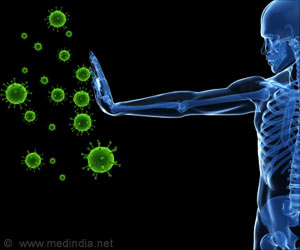Glucagon-like peptide-1 is normally secreted in the gut of both humans and animals, stimulating the release of insulin to lower blood glucose.

- The glucagon-like peptide-1 (GLP-1) hormone produced in the gut and venom of the platypus regulates blood glucose.
- GLP-1 hormone produced in the venom lasts longer than that //produced in the gut.
- The venom is secreted by the male platypus during breeding has most likely triggered the evolution of a stable form of GLP-1 in monotremes.
"Our research team has discovered that monotremes - our iconic platypus and echidna - have evolved changes in the hormone GLP-1 that make it resistant to the rapid degradation normally seen in humans," says co-lead author Professor Frank Grutzner, from the University of Adelaide's School of Biological Sciences and the Robinson Research Institute.
In people with type 2 diabetes, the short stimulus triggered by GLP-1 isn't sufficient to maintain a proper blood sugar balance. As a result, medication that includes a longer lasting form of the hormone is needed to help provide an extended release of insulin.
"We've found that GLP-1 is degraded in monotremes by a completely different mechanism. Further analysis of the genetics of monotremes reveals that there seems to be a kind of molecular warfare going on between the function of GLP-1, which is produced in the gut but surprisingly also in their venom," he says. The platypus produces a powerful venom during breeding season, which is used in competition among males for females.
"We've discovered conflicting functions of GLP-1 in the platypus: in the gut as a regulator of blood glucose, and in venom to fend off other platypus males during breeding season. This tug of war between the different functions has resulted in dramatic changes in the GLP-1 system," says co-lead author Associate Professor Briony Forbes, from Flinders University's School of Medicine.
Professor Grutzner says: "This is an amazing example of how millions of years of evolution can shape molecules and optimise their function. These findings have the potential to inform diabetes treatment, one of our greatest health challenges, although exactly how we can convert this finding into a treatment will need to be the subject of future research."
"The lack of a spur on echidnas remains an evolutionary mystery, but the fact that both platypus and echidnas have evolved the same long-lasting form of the hormone GLP-1 is in itself a very exciting finding," Professor Grutzner says.
Source-Medindia














